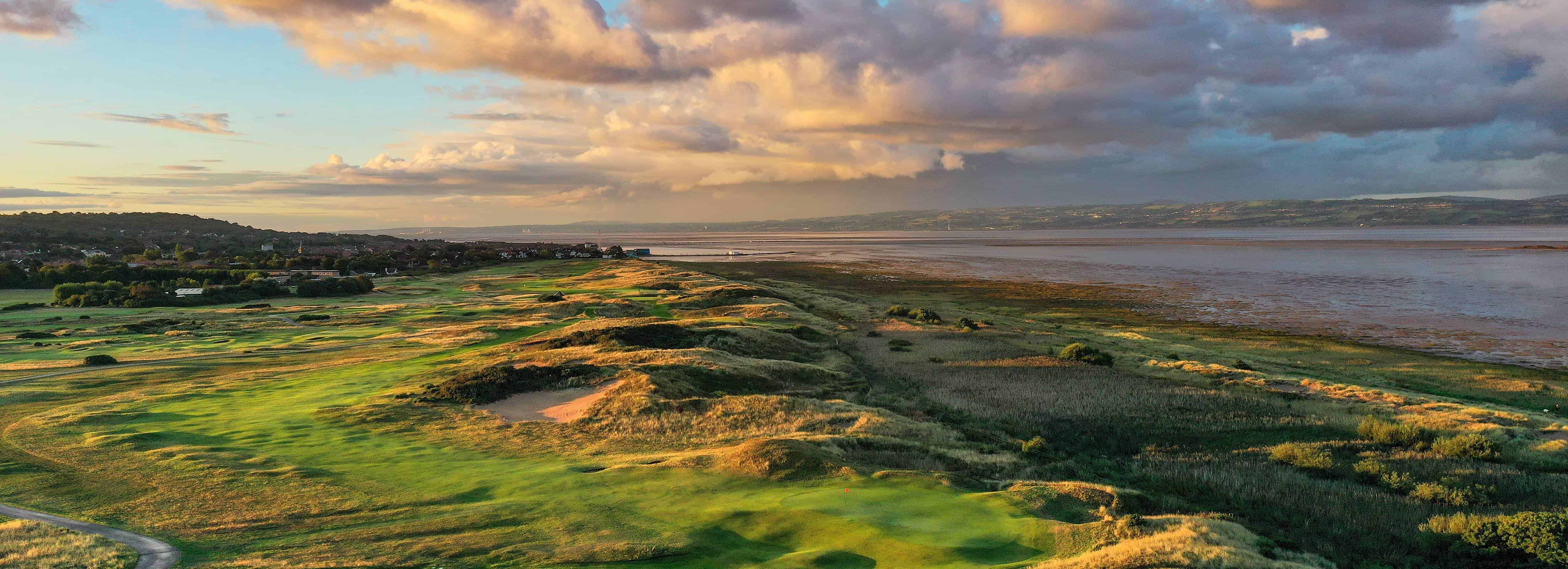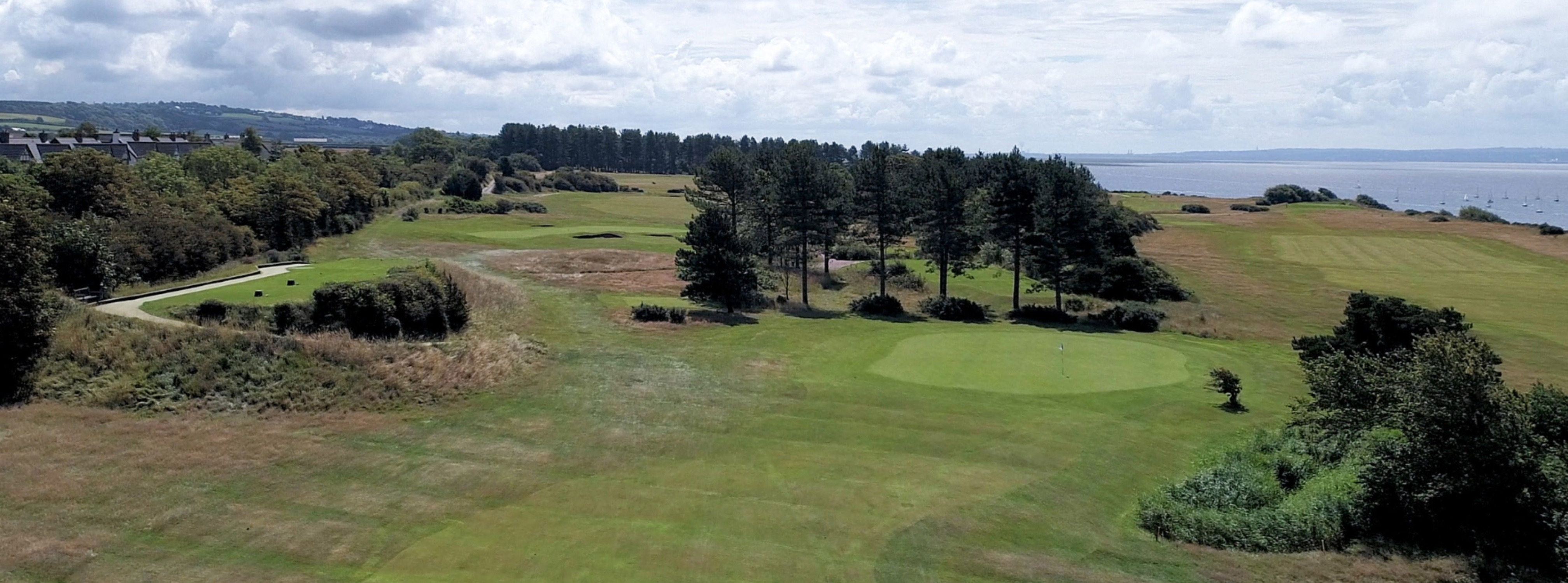
Royal Liverpool
Royal Liverpool | NCG Top 100s : GB & Ireland Golf Courses
Rankings
3rd
11th
24th
29th
Play the course, though, and plain old Hoylake is transformed into Royal Liverpool, host to the Open Championship on 13 occasions. The club last held golf's oldest major championship in 2023, when Brian Harman secured his maiden major title.
It was designed to be played, not photographed, and while countless links courses across the British Isles are more attractive to behold, few are as unremittingly tough; when the wind gets up Hoylake can be brutally difficult.
Hoylake is located in a cranny of England that many people may barely know exists. For the uninitiated, the course is laid out on relatively flat linksland at the end of a peninsula, separated from Liverpool by the River Mersey and North Wales by the River Dee.
There have never been any question marks over the quality of the course. The holes are a classic links mixture of idiosyncratic par threes, short but potentially treacherous par fours and unstintingly difficult long holes. If you are the kind of golfer who takes a couple of holes to warm up and likes the chance to settle into a round, then Hoylake might not be the course for you....
Visit Royal Liverpool's website here.
Go back to the NCG Top 100s Homepage.
Advertisement

A Brief History of Royal Liverpool
The 2006 Open Championship, the first at Hoylake for almost four decades, saw Tiger Woods claim the most emotional major victory of his career, at least until his incredible 2019 Masters win. 2014 saw Rory McIlroy lift the Claret Jug for the first time, with American Brian Harman being the most recent winner of The Open at Royal Liverpool.
Royal Liverpool Review | NCG Top 100s: GB&I Golf Courses
Advertisement

A 90-degree dogleg to the right, anything missing the fairway to that side is out of bounds while a more conservative tee-shot, played to the left, leaves a second of well over 200 yards, with the practice ground still very much in play. Add that the prevailing wind is against either the drive or the second shot and the absence of any bunkers around the green is the hole’s only beneficent feature.
It can only get easier and the 2nd is much more straightforward, although a couple of penal bunkers do protect the inside of the dogleg at this mid-length par four. Risk and reward is very much the theme at the par-five 3rd, where an aggressive drive tight down the left-hand side, flirting with the bunker and a thick patch of gorse, will leave the green within range in two. From further back, the lay-up is complicated by the bunkers around 100 yards from the green.
The 4th is another stern test. Measuring close to 200 yards, the green is perched atop a hillock and rejects everything apart from the straightest approaches. The long par-four 5th is made slightly easier by usually playing downwind but the approach, partially blind, is much longer than it appears and requires a long second.
From the championship tee at the 6th, there does not even appear to be a fairway. The tee shot must be played along the boundary of the course and over a hedgerow some 200 yards from the tee, over which the short grass can finally be found. Suffice it to say that the conservatory built on the back of one of the houses that overlooks the 6th tee would not still be standing if the hole was played from here throughout the year. Having found the fairway, the approach is relatively straightforward to a large, flat green.
If the 8th is a short par 5 by modern standards, it can still present problems and is generally played into the wind. Out of bounds, more of a feature here than at most Open venues, lurks constantly down the right and the fairway narrows into virtually nothing at driving distance, making the tee shot a difficult one. Any approach slightly under-hit and to the right will be magnetically attracted to a maliciously deep bunker some 25 yards in front of the putting surface.
From the elevated 9th tee at the very far end of the course, much of the back nine is unfurled ahead. This is a place for contemplation, a quiet corner of the course to pause a moment before taking on the second nine. In many ways, this hole is the most ‘linksy’ on the course. Royal Liverpool is predominantly flat but the 9th features giant humps and hollows, with the green obscured behind a large hill from all but the extreme left-hand side of the fairway.
The back nine begins with a long dogleg that sweeps its way around and uphill to the left. From there the course’s outstanding par three, the 11th, is played to a green set at the foot of a large dune. The 12th is similar in character to the 10th, before the final short hole, Hoylake’s equivalent of Royal Troon’s Postage Stamp, which is played to a small target surrounded by deep bunkers.
The 16th, another par five, is more subtle than the previous two and runs around the other two sides of the practice ground to the 1st. The green is within reach after a good drive, but the decision must be made as to whether the long carry across the out of bounds is worth the risk. The green is set up to receive shots coming in from this perilous angle while deep bunkers await anything on a safer line slightly left of target. Starting from close to the clubhouse, the 17th is another long par four, this time turning to the left, and featuring a cluster of bunkers at the front of what is a very long green. It means the approach is extremely deceptive, because the pin can be almost 60 yards beyond the bunkers that appear to front the green.
The last hole, though well over 400 yards in length, is not the most fearsome of Open finishing holes, and a drive played just short of the bunkers will leave a mid to short iron to the green. Royal Liverpool is a very fair course, and the bounce of the ball is generally predictable and true.
With four par fives, an increasing rarity in championship golf these days, there are opportunities to pick up shots at Royal Liverpool. At over 7,200 yards and at the mercy of the British weather, however, some players might be in for a ‘character-building’ experience.
Our Panellists Notes for 2025
David Walker: An incredibly strong and well-balanced golf course
Michael Verity: Highly strategic, very clever design. Slowly reveals itself as you play it more and more
Dan Murphy: The turf is so good and the presentation so precise. Could the rollicking duneland nearest the sea and furthest away from the clubhouse be used any more than it currently is?
Read more about our panellists here.
Advertisement

FAQs about Royal Liverpool
Where is Royal Liverpool located?
Royal Liverpool is situated on the very northwestern tip of the Wirral Peninsula, to the west of Liverpool. The town of Hoylake is to the east, while West Kirby is to the south, with the course sat in between the two. It is right on the coastline of the Wirral, overlooking the River Dee and the North Sea, and with a view to Hilbre Island – which can be walked to during low tides. The city of Liverpool is just over ten miles to the east of Royal Liverpool.
Both Hoylake and West Kirby have train stations, and both sit on the same line. West Kirby is the end of the line, with trains running via Hoylake to and from Liverpool Central on a regular basis throughout the day. Due to its proximity to the city, Liverpool John Lennon Airport is the nearest international airport to Royal Liverpool, just 20 miles from the venue if you drive through the city centre. Manchester Airport – the country’s biggest airport outside of London – is only 50 miles away as well.
Are there any other NCG Top 100s: England venues nearby?
Along with Royal Liverpool, Wallasey is also based on the Wirral Peninsula – less than ten miles from the Open Championship-hosting venue. There are then the likes of West Lancs, Formby, Formby Ladies, Southport & Ainsdale, Hillside and Royal Birkdale along the northwest coastline, within 25 miles.
What golf facilities does Royal Liverpool offer?
Along with the stunning championship golf course, Royal Liverpool is also home to a driving range, which sits in the middle of the golf course. There is a short game area and a putting green by the side of the 2nd green, near the clubhouse.
What are the green fees at Royal Liverpool?
The price of a green fee at Royal Liverpool changes throughout the year, depending on the season. It is also different depending on whether it is a weekday or weekend.
For more information on current green fees at Royal Liverpool, visit their website here.
Course Reviews

0.0 | 0 reviews



